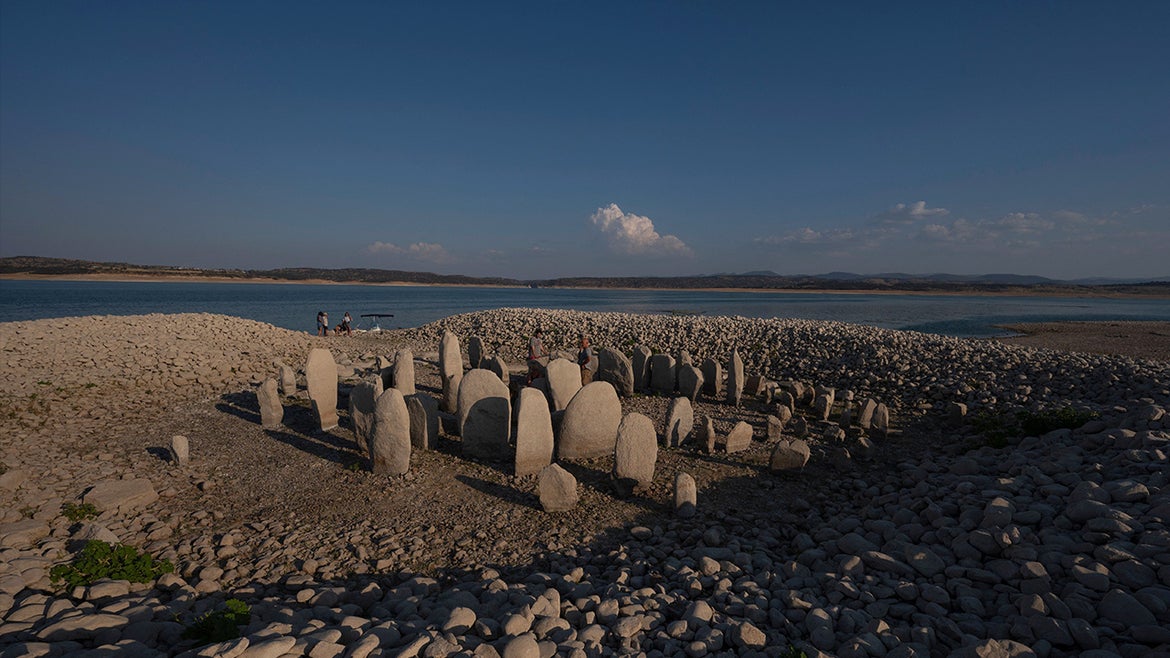The monument reportedly found around a century ago was flooded, but has resurfaced.
With water levels dropping due to an extreme drought, the “Spanish Stonehenge," or the Dolmen of Guadalperal, has reemerged.
The Dolmen of Guadalperal is known as the Spanish Stonehenge because it is a site where dozens of megalithic stones are arranged in a circle, similar to Stonehenge in England, and is believed to date back to 5000 BC, according to Reuters.
These megalithic stones can be found in Valdecanas reservoir, which is in the central province of Careses in Spain, where water levels have dropped 28%, as reported by Reuters.
This is not the first sighting of the stones: they also reappeared in 2019 after being submerged for roughly six decades, according to EuroNews.
The monument was reportedly found in the 1920’s by a German archaeologist, Hugo Obermaier, who published his findings in the 1960’s. The site was then flooded in 1963 due to the dam and reservoir created by Francisco Franco’s regime, reported Atlas Obscura.
With the stones reappearing, locals and historians are excited to take advantage of their presence.
Ruben Argentas, owner of a small boat tourism company, is ready for what the reemergence of the stones mean for business, Reuters reported.
"The dolmen emerges and the dolmen tourism begins," Argentas told Reuters.
Archeologist from Madrid’s Complutense University, Enrique Cedillo, told Reuters, “It's a surprise, it's a rare opportunity to be able to access it.”
Though this is a source of excitement for many, what the appearance means in terms of water levels and climate change is not as exciting.
According to a journal published in July by Nature Geoscience, Spain is the driest it has been since over 1,000 years ago and is expected to get less winter rain due to the climate crisis, as reported by the Guardian.






